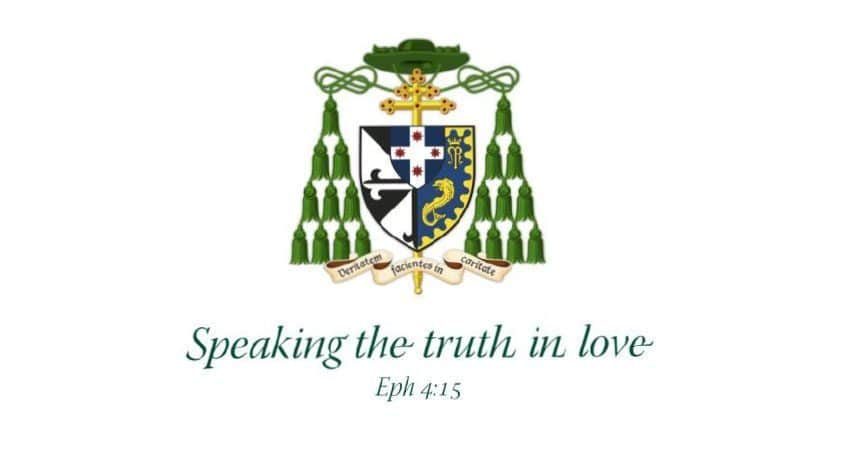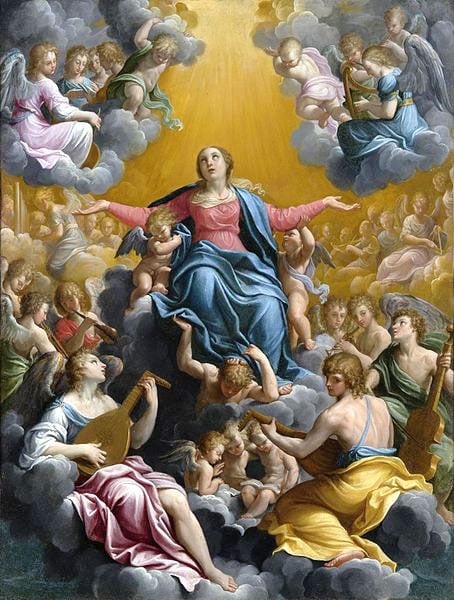Homily for Mass for the Solemnity of the Assumption (Votive Mass of the BVM)

St Aloysius College, Milsons Point, 17 August 2022
Most ‘Reality TV’ is not be very real, but something about it captivates many Australians. Recent data suggest that half of the most watched shows in this country are in that genre; the rest are sports. These have included the finales of Masterchef Australia, The Block, Australian Idol, The Voice and My Kitchen Rules.[i] Gogglebox even allows us to watch other people watching other reality TV shows! If they had a show My School Rocks, I’m sure Aloysius would win… But why, we might wonder, are ordinary people today more interested in watching would-be chefs, home improvers, lego builders or spectators, than trained actors? What is it about watching such seemingly mundane tasks as cooking, renovating, singing and viewing that so captivates us? Clearly, there is the real-life drama of it all: real people’s hopes and dreams are at stake. And there is something levelling about it: these are ordinary human beings like us, rather than established celebrities, and we expect them to have ordinary hopes, needs and emotions like us too.
One theme that unites many of these shows is transformation. The dramatic journey to fulfilled potential speaks to something latent in each of us: the desire and hope of becoming more than what we have been so far. Whether it was St Aloysius or St Stanislaus Kostka who declared “I want eternity: I was born for greater things”,[ii] the words Ad Majora Natus, embroidered on your blazers and hearts, perfectly capture this hope for more. That your average Joe or Jane might become a Michelin star chef, pop star, interior design maestro, or lego artist is proof that our own dreams of greatness can be realised also.
One recent iteration of this genre of transformational reality TV is Beauty and the Geek. It pairs up glamorous girls with clever but socially awkward guys, and each odd couple competes in a series of challenges and makeovers to see who will be crowned ‘more than a beauty and a geek’. However imperfectly, the show touches upon what makes us special. Despite the fixation on looks and presentation, there are moments that demonstrate that real beauty is more than skin deep, and that there is more to us than what people see on the outside. In fact, neither our exterior nor our interior is the be-all-and-end-all, and to focus on one to the exclusion of the other is to misunderstand what human persons are.
The Christian tradition has long celebrated the fact that human beings are a unity of body and soul. We have both visible and invisible sides to us, material and spiritual, thoughts and deeds, mortal and immortal dimensions. Both are essential to our identity and destiny. Our spiritual dimension is captured in the very opening lines of the Bible by the notion of human beings as “made in the image of God” (Gen 1:27)—intelligent, free and loving—made able to appreciate and express intangible and transcendent things as much as down-to-earth ones, and made for a life in eternity. Our material dimension is captured by the expression also in the Book of Genesis “You are dust and unto dust you shall return” (Gen 3:19): we are bodily beings, with the gifts and limitations of animals, and no matter how highfalutin our thoughts and words, we can be mugged by material reality. TV shows focused on geeky intellects or beauty highlight the intangible side of our natures, while those about house or body makeovers attend more to our physicality.
That God—a pure spirit—would become incarnate in Jesus, like us in all things but sin, seems to many religions plain blasphemous: what self-respecting god would want to share our material limitations, sickness and death? Yet God clearly values both our spiritual and bodily life enough to have entered into both. Even after death Christ was resurrected bodily, showed us his glorious wounds, ate with us by the lake, touched us and touches us still in His sacraments. Clearly, from His point of view, our bodies are not just hardware to run our mental software, not just costumes we can discard in due course. They are temples for our own souls and the Holy Spirit (cf. 1Cor 6:19): they tell us and the world who we are and what we are destined to become.

We get a glimpse of our destinies as glorified beings both body and soul when we meditate on Mary’s Assumption, perhaps when praying the glorious mysteries of the Rosary. It would be hard to find a better example of Ad Majora Natus than that of Mother Mary. As the one whom we hear called ‘Most Blessed’ by Elizabeth today and who recognises in her own Magnificat all generations will call ‘Blessed’ (Lk 1:39-56), whom Elizabeth also calls ‘Mother of my Lord’ or ‘Queen Mother’ and who recognises in her song that she will be raised from her lowliness and enthroned—Mary’s life was marked out for something utterly special. Her body would carry, birth, and feed Jesus, God-made-baby. Her body would teach and nurture God-made-boy and youth with her husband Joseph. With that same voice and physical care she would intervene at Cana to provoke Jesus’ first miracle (Jn 2:1-11). You might say her ministry ever since has been to prod Him on our behalf, and it is as often for our physical needs as our spiritual ones. She would stand bodily by Jesus’ cross, and receive His body back into her lap once He had died.
Mary continued to trust and to give, and having lived her life so faithfully in trusting and giving she was ready to enter immediately into the resurrection. To proclaim that she was assumed into heaven body and soul is to say something very important about our humanity: for here we get the sneak peek of what heavenly glory will mean for us. Not just more of the same old, not just Beauty and the Geek style makeovers, but a total transformation of body and soul. We children of the First Eve, doomed to return to dust, become children of the Second Eve, destined for glory in heaven.
As first-born after Christ Himself to this new glorified life (Col 1:18), Mary proves to us that in eternity we will be all that we are in this life and more, not less; if we live the life of body-and-soul with faith and love as she did, we can hope for such rebirth. The Assumption says you men are truly Ad Majora Natus, born for something greater—a transformation greater than any you’ll ever find on reality TV!
[i] https://www.finder.com.au/most-watched-tv-broadcasts
[ii] Some attribute it to St Aloysius: https://staloysius.e-newsletter.com.au/link/id/zzzz576a72d347925677/page.html#zzzz576a6847e7ee2320; https://www.oxfordoratory.org.uk/news.php?newid=1458. But Pope Francis and others attribute it to St Stanislaus e.g. https://www.vatican.va/content/francesco/en/messages/pont-messages/2018/documents/papa-francesco_20180815_messaggio-450-stanislao-kostka.html; https://en.wikipedia.org/wiki/Stanislaus_Kostka; https://www.azquotes.com/author/32502-Stanislaus_Kostka; https://www.goodreads.com/book/show/2864212-ad-maiora-natus-sum—aku-lahir-untuk-hal-hal-luhur.
Introduction to Mass for the Solemnity of the Assumption (Votive Mass of the BVM) St Aloysius College, Milsons Point, 17 August 2022
I am delighted to be here at St Aloysius’ College this morning. This week the Church celebrated the climax of the life of the Blessed Virgin Mary when she was assumed body and soul into heaven, and today we recognise the special place that she holds in our faith by celebrating a Mass in her honour. Under the title ‘Help of Christians’ Mary is also patron of our archdiocese and of our country, and so there is an extra sense in which we look to her for inspiration and intercession.
Concelebrating with me today is College Rector, Fr Ross Jones SJ and College Chaplain Fr Nico Lariosa SJ. I acknowledge College Board Chair Mr Michael Morgan, Principal Mr Mark Tannock and Deputy Principal Mrs Kate Quinane, together with staff and students of Years 3 to 11, and we keep the Year 12s in our prayers during their trials and tribulations.

